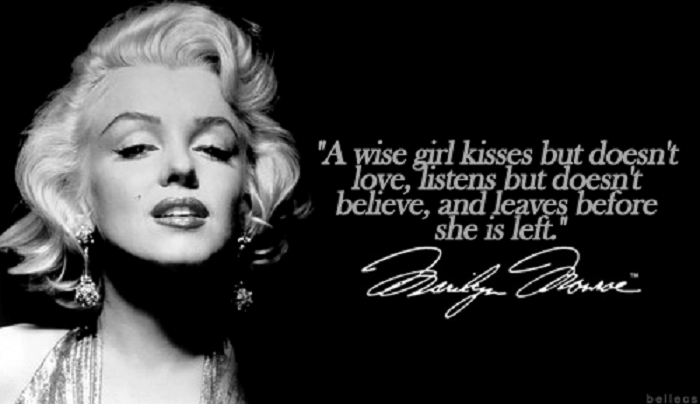Unlike her contemporaries Elizabeth Taylor, Debbie Reynolds and Jane Russell, she has been crystallised as an image of perfection: a concoction of fluffy white blonde hair, sleepy-lidded eyes, and a dazzling smile that appears both seductive and carefree.
Just how carefree she really was, however, is a longstanding cultural obsession that today arguably exceeds the interest in her film performances.
The circumstances of Monroe’s death have always been seen as the dark side of this luminous vision; a cautionary tale of excess and addiction, to those who lust for the champagne-fuelled whirl of sex and glamour conjured up by those rumours of the Kennedys, Sinatra and Joe DiMaggio.
Biographers and journalists have detailed stories of addictions and psychiatric illnesses, which have all contributed to the legend of Monroe as a tragic victim: a girl born on the wrong side of the tracks, with a childhood in and out of foster homes, and an adulthood of exploitation by the men she craved affection from and who eventually led to her lonely, mysterious death.
In 2010, however, the publication of her personal papers revealed a far more contemplative and poetic Monroe, evidenced in her handwritten poems, letters and journal entries.
These items of correspondence and ephemera were published in a volume called Fragments: Poems, Intimate Notes, Letters by Marilyn Monroe, edited by Stanley Buchthal and Bernard Comment.
These notes are the writings of a poet: a person who is driven to write and to express herself in carefully crafted words. She attempts to capture the precise phrase to convey her mood or feeling, and also shows a reflexivity and insight into her star persona which evidences a sombre intelligence.
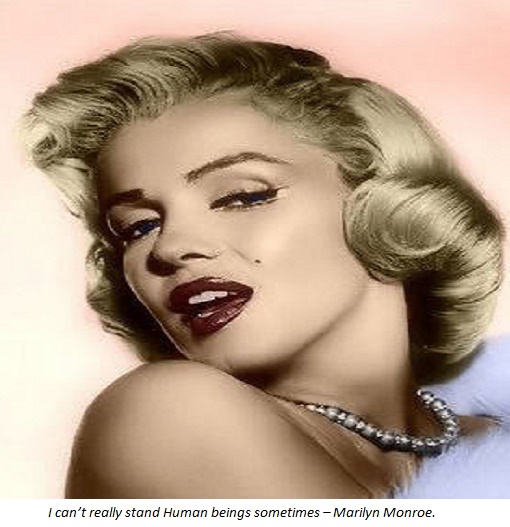
As the editors say, “the collection of documents revealed here is nothing less than a treasure trove… there is nothing dirty or low, no gossip in this book; that was not Marilyn’s way.
What the notes reveal is intimacy without showiness, the seismic measuring of a soul. They take nothing away from Marilyn’s mystery but rather make the mystery more material.
She was an elusive star with a magnetic force that sent compasses haywire whenever she got close.”
‘Sense of myself’
In notes she typed early on in her marriage to James Dougherty in the early 1940s, the teenage Marilyn wrote that “all this thought and writing has made my hands tremble but I just want to keep pouring it out until that great pot in the mind is, though not emptied, relieved”.
This shows how the process of writing was integral to Monroe’s self care and well being. She could also be honest here, perhaps in a way that she couldn’t be elsewhere.
On an undated scrap from a notebook she wrote “I can’t really stand Human beings sometimes – I know they all have their problems as I have mine - but I’m really too tired for it. Trying to understand, making allowances, seeing certain things that just weary me.”

In her so-called Record notebook from around 1955 she writes that her “first desire was to be an actress” and that she is striving to work fully and sensitively, “without being ashamed of it”.
Her drive to work on herself and her craft was merciless: “I can and will help myself and work on things analytically no matter how painful”, and she notes in her notebook a single line, “having a sense of myself” – as if the words ground her in some way and remind her of what she needs to keep in mind.
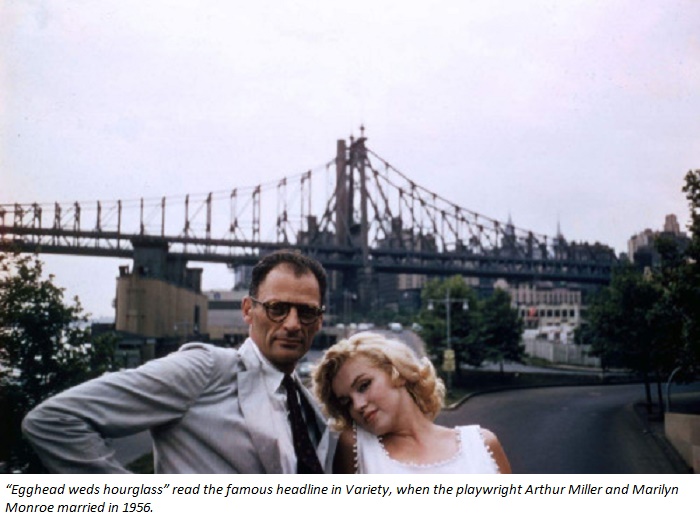
`I guess I have always been deeply terrified to really be someone’s wife since I know from life one cannot love another, ever` – Marilyn Monroe
On notepaper of the Waldorf Astoria hotel she writes that she must “not make commitments or tie myself down to engagements”, and that she should “remember there is nothing you lack – nothing to be self conscious about yourself – you have everything but the discipline and technique which you are learning and seeking on your own.”
She was working on techniques to overcome her fear, but it crept into every aspect of her life, including her marriage to Arthur Miller. While they were in England, filming The Prince and the Showgirl, she discovered a page of notes by Miller that he claimed were sketches for a new character he was developing, expressing disappointment in their marriage and confessing that sometimes he was ashamed of her in front of his friends.
This was a devastating blow to Monroe, and her notes at the time show just how severe it was. She writes, “I guess I have always been deeply terrified to really be someone’s wife since I know from life one cannot love another, ever, really… starting tomorrow I will take care of myself for that’s all I really have and as I see it now have ever had”.
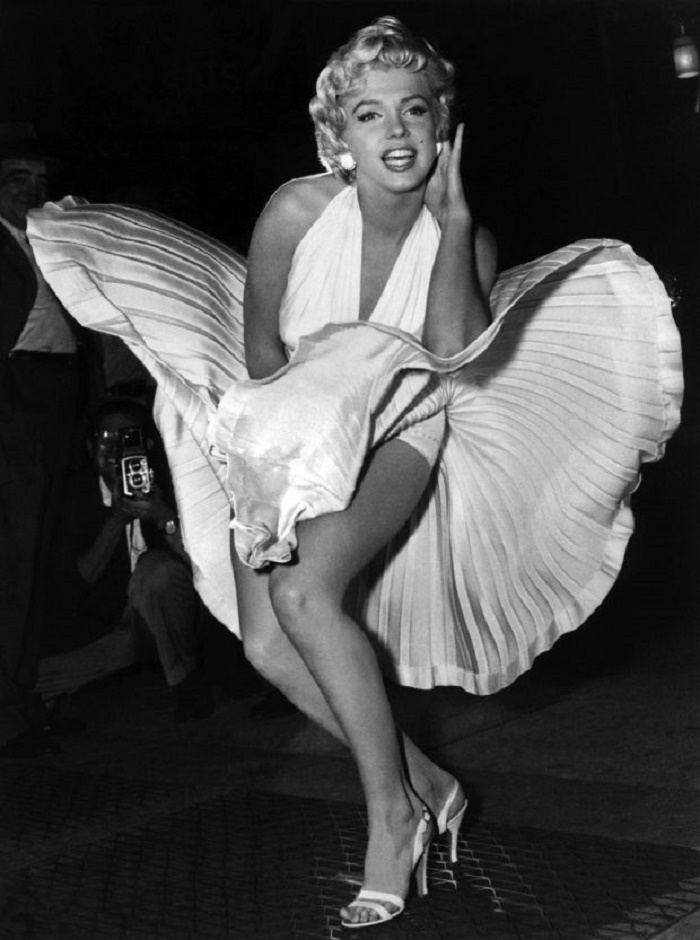
The star fusses playfully with her billowing skirt in The Seven Year Itch – but the iconic image`s carefree tone is at odds with her private writing`s mood.
The fragments which she wrote on bits of paper reveal a woman constantly striving to ground herself, help herself, and keep on top of her demons.
They also show Monroe’s determination and strong will: whether it is in the planning of dinner parties or the preparation of a performance, Monroe was meticulous and dedicated to doing her best.
Personal papers
For those who are truly fascinated by Monroe’s personal and domestic life, there is also the book about the contents of her filing cabinets, called MM – Personal, in which the historian Lois Banner uses the invoices, receipts, letters, contracts and business documents contained in them to challenge many assumptions about Monroe, such as the idea that she didn’t keep good financial records: the contents of her cabinets show that she did.
Banner demonstrates how Monroe was a capable person who enjoyed cooking, correspondences and many good friendships. And in Marilyn Monroe: The Personal Archivesby Cindy De La Hoz, facsimile items from Monroe’s archives such as birthday cards, cheques and telegrams, create a feeling of actually being able to enter Monroe’s domestic sphere, with tactile access to intimate correspondences.
This access to Monroe’s life off-screen has fuelled her contemporary presence on social media, with innumerable Pinterest, Instagram and Facebook pages dedicated to Monroe’s quips, quotes and writings.
But it is important to remember that these writings are not just jottings or doodles. They were not intended for publication.
They are the imaginative and poetic reflections and observations of a woman driven to express herself cathartically and creatively.
In them she can say honestly what she is feeling about what she wants. These writings are more consistent with the photographs of Monroe as a contemplative thinker and avid reader. Perhaps the photographs of Monroe reading Ulysses were not staged ironically after all.
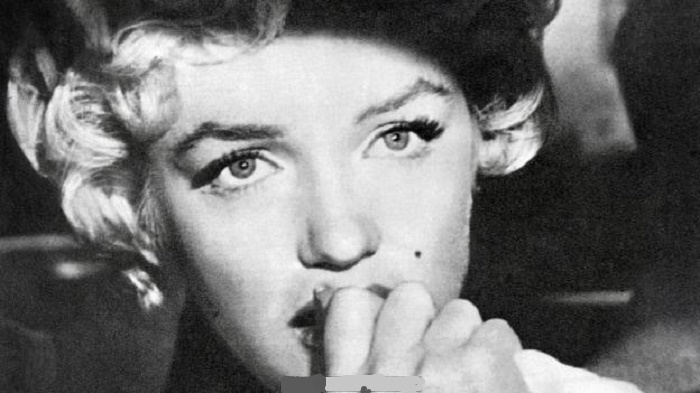
A portrait taken six months before Marilyn Monroe’s death captures something of the tragic tone of much of her writing.
The most important things that these diaries and writings do is to give Marilyn Monroe a voice: unmediated, created by her own hand, as a direct line to her reflective consciousness.
This is a diametrically opposed way to relate to Monroe to the two-dimensional pin-up, model, or ‘girl’ onscreen. These suggest what ‘the girl’ might have been doing in her apartment while Richard Sherman was having his mid-life crisis downstairs in The Seven Year Itch, or what Cherie might have been writing in her journal in her dressing room in Bus Stop as she planned her trip to Hollywood and Vine.
In other words, they add a cerebral, imaginative and personal dimension to the cultural icon that is Marilyn Monroe, enabling us to relate to her as a thinking, feeling woman with desires and opinions, like all of us.
More about:








